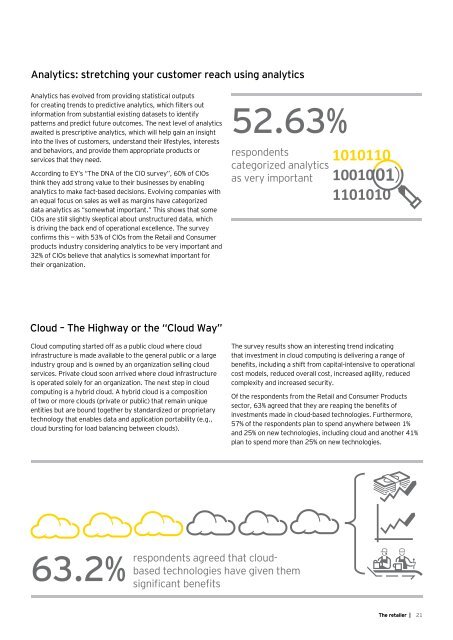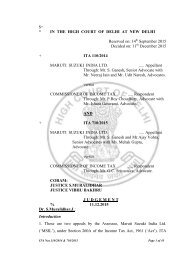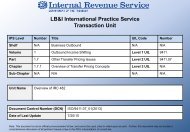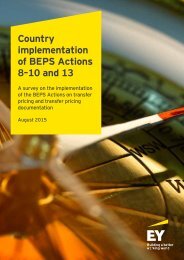The retailer
1EGEa6G
1EGEa6G
- No tags were found...
Create successful ePaper yourself
Turn your PDF publications into a flip-book with our unique Google optimized e-Paper software.
Analytics: stretching your customer reach using analytics<br />
Analytics has evolved from providing statistical outputs<br />
for creating trends to predictive analytics, which filters out<br />
information from substantial existing datasets to identify<br />
patterns and predict future outcomes. <strong>The</strong> next level of analytics<br />
awaited is prescriptive analytics, which will help gain an insight<br />
into the lives of customers, understand their lifestyles, interests<br />
and behaviors, and provide them appropriate products or<br />
services that they need.<br />
According to EY’s “<strong>The</strong> DNA of the CIO survey”, 60% of CIOs<br />
think they add strong value to their businesses by enabling<br />
analytics to make fact-based decisions. Evolving companies with<br />
an equal focus on sales as well as margins have categorized<br />
data analytics as “somewhat important.” This shows that some<br />
CIOs are still slightly skeptical about unstructured data, which<br />
is driving the back end of operational excellence. <strong>The</strong> survey<br />
confirms this — with 53% of CIOs from the Retail and Consumer<br />
products industry considering analytics to be very important and<br />
32% of CIOs believe that analytics is somewhat important for<br />
their organization.<br />
52.63%<br />
respondents<br />
categorized analytics<br />
as very important<br />
Cloud – <strong>The</strong> Highway or the “Cloud Way”<br />
Cloud computing started off as a public cloud where cloud<br />
infrastructure is made available to the general public or a large<br />
industry group and is owned by an organization selling cloud<br />
services. Private cloud soon arrived where cloud infrastructure<br />
is operated solely for an organization. <strong>The</strong> next step in cloud<br />
computing is a hybrid cloud. A hybrid cloud is a composition<br />
of two or more clouds (private or public) that remain unique<br />
entities but are bound together by standardized or proprietary<br />
technology that enables data and application portability (e.g.,<br />
cloud bursting for load balancing between clouds).<br />
<strong>The</strong> survey results show an interesting trend indicating<br />
that investment in cloud computing is delivering a range of<br />
benefits, including a shift from capital-intensive to operational<br />
cost models, reduced overall cost, increased agility, reduced<br />
complexity and increased security.<br />
Of the respondents from the Retail and Consumer Products<br />
sector, 63% agreed that they are reaping the benefits of<br />
investments made in cloud-based technologies. Furthermore,<br />
57% of the respondents plan to spend anywhere between 1%<br />
and 25% on new technologies, including cloud and another 41%<br />
plan to spend more than 25% on new technologies.<br />
63.2%<br />
respondents agreed that cloudbased<br />
technologies have given them<br />
significant benefits<br />
<strong>The</strong> <strong>retailer</strong> |<br />
21






